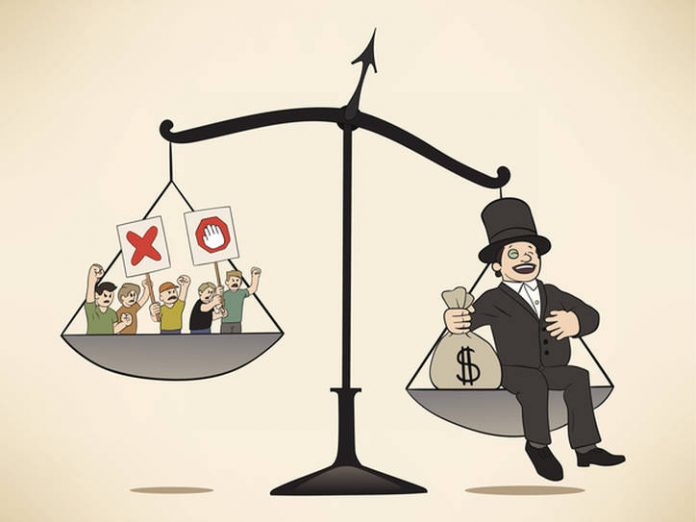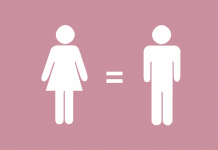The Article is written by Shreya Pandey from Banasthali University, Jaipur. The article analyzes the dynamics of inequality in India, in different dimensions, its factors, and its consequences.
Table of Contents
Introduction
India is a country with numerous castes, religions, languages, beliefs, cultures, status, etc. The people of India are different from each other in several aspects such as economic, social, cultural, religious, etc. The major reason for the disparity amongst the people arises because of the distinction in economic status between them. It is usually observed that in India people with a different language, religion, or caste can live in a society together if their economic status is equal. India being a welfare state should focus on equitable growth in the economy but in reality, it is observed that there has always been inequality in the distribution of wealth and income.
This inequality in the distribution in turn leads to social and economic distress as well. It is necessary for the overall development of the country that economic inequality be reduced and eventually removed. For such reduction and removal, the Indian government has taken several steps such as the five-year plans but the inequality instead of reducing has taken a turn to increase and widen over time.
Rise in inequality
After the introduction of early reforms in the early 1990s, India achieved unprecedented per capita growth rates but this growth was also accompanied by rising inequality, a severe issue of concern. The rise of inequality has been observed to increase between 1983-2012. Although poverty has fallen and many have escaped from it still, they are at high risk of falling back into that category. Moreover, those who are still in poverty, suffer from very severe problems, with continuous deterioration in their situation and hence, even any helping hand by the government through the introduction and expansion of safety nets cannot reach them.
A study on income inequality, based on the combination of multiple data sources and novel techniques, (Chancel and Picketty, 2017) suggested that income inequality in India declined sharply between the 1950s to 1980s but it went on to increase thereafter. During the 1980s it reached 10% and then thereafter it has been increasing rapidly. The estimates of income inequality place India as the country with the highest rate of inequality, internationally. The Gini index is an indicator of inequality. It varies from zero, which refers to perfect equality, to one, which refers to complete inequality. The Gini coefficient for wealth based on The All India Debt and Investment Surveys (AIDIS) rose from 0.67 in 2002 to 0.83 in 2017, putting India among countries with high inequality.
India’s condition has improved and gained a better position at health and education over the past few decades, but it is not uniform. There are differences in levels of inequalities across social groups, states, and rural-urban areas. It reflects inequalities in the opportunity to access basic services.
Dimensions of inequality
In India, there are several dimensions in which inequalities are distributed. Inequality is an issue that cannot be described and discussed in a single context, rather it is subjected to various dimensions that have different reasons and different consequences. Broadly, inequality can be segmented into the following dimensions:
Local-level inequality
It is within rural villages and urban blocks. It accounts for the bulk of overall inequality in India. Its level varies considerably across the Indian states.
Social groups inequality
Inequality due to caste is one of the major categories for discrimination and inequality. Scheduled Castes and Scheduled Tribes are the ones who suffer the most due to caste discrimination. They are subjected to inequalities almost everywhere and their situation is worse across health, education, and monetary indicators.
People in India SCs and STs are still considered untouchables and they are allotted works such as sewage cleaners, etc. Although many Acts and provisions are enacted to reduce discrimination on caste still, there are many places where untouchability is being practised and people of low caste are subjected to do such jobs that are inhuman. The Untouchability (Offences) Act was introduced to punish the practice of untouchability and bring a uniform atmosphere where no person is treated unequally due to its caste.
Gender-based inequality
Women suffer a lot due to gender biases. Earlier women were not even educated as it was considered that they are born only for doing household works that require no education. Now the condition is better but still, they are facing continuous inequalities in jobs, nutrition, and education. Although now women are getting an education as the right to education has become a fundamental right. Women used to get low wages than men and even after working equally and working for equal hours. Article 39(d) of the Indian Constitution provides for equal pay for equal work and Article 41 provides for the right to work to all irrespective of their gender.
Women suffer from all sorts of harassment at the workplace. Many incidents and first hand accounts of rape, harassment, etc are reported frequently. The guidelines given by Supreme Court in the Vishakha case paved a way for the enactment of the Sexual Harassment of women at workplace (Prevention, Protection, and Redressal) Act, 2013. The Act came into force since 2013 but still, the awareness regarding the consequences of sexual harassment and its redressal is limited.
Status-based inequality
Those who are poor are subjected to inequality everywhere. Since they cannot afford much and they are not educated enough, people of better status and education misuse and take advantage of the poor. Children from villages move to cities for jobs and a better lifestyle where they are exploited by not paying them, making them do dangerous and life-risking tasks, making them servants, etc. The ones on or below the poverty line have to struggle for their mere existence as they do not have bread to feed themselves.
Monetary inequality
Monetary inequality can be divided into three aspects: consumption, income, and wealth. Consumption and income is a measurement of the flow of resources over time. Wealth refers to a stock of resources available at a point in time. The ratio between the richest and poorest deciles suggests that between 1993-1994 and 2004-2005 there was rising inequality and it continued to rise thereafter. In 2011-2012, the richest 20% of the population of the country accounted for 45% of the consumption.
The India Human Development Surveys (IHDS) is a nationally representative household panel survey. It collects comprehensive information on consumption and income. It indicates that income inequality in India was about 0.54 during 2004-2005 and 2011-2012.
An estimate of wage earnings was done by Rodgers and Soundararajan (2015) indicates an increase between 1993-1994 and 2004-2005. The Gini coefficient between 2004-05 for income inequality in India was almost 14 points higher than for expenditure.
Non-monetary inequality
Non-monetary inequality includes services such as health and education. These places also suffer a considerable amount of inequalities on the basis of caste, status, and gender. The National University of Educational Planning and Administration (NUEPA) in its annual report 2015 observed that from 1991 to 2013 there had been an increase by more than seven years in life expectancy at birth. The infant mortality rate fell by half, the maternal mortality ratio fell by about 60%, and the total fertility rate fell to almost replacement level. The report also observed that the education system has also expanded rapidly. The gross enrolment ratios had become 100 and 95 in primary and upper-primary classes respectively.
Factors of inequality
Differences across locations
It is an important source of rising inequality. The 2016-17 economic survey by the Department of Economic Affairs observed that eight low-income states, i.e., Assam, Bihar, Chhattisgarh, Jharkhand, Madhya Pradesh, Odisha, Rajasthan, and UP account for 50% of India’s population still there occurs 71% of infant deaths, 72% of under-five mortality, and 60% of stunting. According to the Ministry of Health and Family Welfare and IIPS 2017, child stunting ranges from 2 in 10 children in Kerala, about 5 in 10 in UP and Bihar. The report also states that more than two-thirds of maternal deaths, and more than half of neonatal deaths occur in Bihar, Madhya Pradesh, Rajasthan, and UP.
Differences across social groups
The subsisting discrimination and distinction between SCs, STs, other backward castes (OBCs), and others is another factor paving the path for rising inequality. According to estimates based on NSS and IHDS data, the income and consumption share of SCs and STs are comparatively lower than the population shares. Meanwhile, OBCs are in a better position and have relatively higher shares than SCs and STs, but still, they have less share than population share. There is also a decline in income shares of the STs while there is an increase in the income share of others.
During the COVID-19 period, the daily wage workers had to and are still suffering the most, mainly because of no work to earn their bread. Their situation was so drastic that they had to return back to their villages barefooted. The return of the daily wage workers from Mumbai and other metro cities to their villages in Uttar Pradesh and Bihar was one of the most heart throbbing sights for every Indian. Their condition was proof of how financially weak they were, that they could not even afford to live without working for even a week.
An analysis by Chaudhary and Verick (2014) observed that between 2004 and 05 and 2011-12 when GDP grew at 8% per annum, the female labour force participation rate declined to 25% from 35%. The reason for this decline may be an increase in women’s education, mechanization, and increasing formalization. Distinction based on religion is yet another reason. Minorities such as Christians do not have to suffer much discrimination but Muslims have to suffer more than even SCs and STs in urban areas.
Differences by occupation and factor ownership
A large section of the workforce is engaged in agriculture and employed in the unorganized sector. Unorganized sectors employ more workforce as compared to the well-paying sectors. Sectors such as finance, insurance, real-estate sectors, IT-related services, and telecommunications employ less than 2% of the workforce. Inequality among workers in the organized sector is a very small component of overall inequality still it emphasizes the changing nature of production. There is a rise in profit shares and a decline in gains to workers in the organized sector.
Consequences of inequality
After many plans and programs initiated to reduce and remove inequality, still, there is no significant reduction in inequality and discrimination which is causing a great setback in the country. India is still considered to be a developing nation, the main reason behind it being the unequal distribution of money. People of lower castes belong to poor families and are mostly unemployed or work as daily wage earners that barely fetch them their bread for a living. Inequality due to the caste system is being practised all over the country which is detrimental for the country as the rich are getting richer and the poor getting poorer. India being a welfare county should focus on how the disparities get reduced and people obtain equal opportunities, services, jobs, status, and monetary distribution. Inequality is considerably dragging the country behind because people of the country also include the poverty-stricken people who are not developing due to which country will and is suffering.
Another consequence of rising inequality is that the Gini coefficient has been continuously increasing, placing India among the countries having the highest inequalities. Another consequence of inequality is the deteriorating situations of the poor. Government and its plans and programs are not fruitful and people who are placed below the poverty line are not being helped and supported.
Women empowerment is something that is heard whenever there happens any crime against women which raises the public’s concern. In reality, plenty of crimes against women occur daily across the country. Women still are subjected to harassment and unequal payments. There is a requirement of creating an environment where women can speak up about their grievances without any fear of society and could get justice. There is also a need for sensitization of men towards the treatment of women at the workplace.
Conclusion
Rising inequality can affect political stability, the sustainability of economic growth, and the mobility of individuals. Growth and human development are determined by the existing state of income distribution. It is also dependent on the place of birth of an individual, his caste, community, religion, region, and gender. These factors affect an individual’s access to opportunities, prejudice, marginalization, discrimination, or disadvantage. An individual’s gender, caste, or community affects its participation in the labour market.
The dynamics of inequality has been seen to be different in different aspects. Somewhere it has been rising while in dimensions such as gender-based inequality, it has been observed that there has been a considerable decline in inequality as well. For the overall benefit of the population of the country, it is very essential to remove inequalities on any basis. Every individual should be treated equally and no one should be subjected to discrimination on any unreasonable ground. Article 14 and Article 15 of the Constitution of India provides for equality and prohibits discrimination. Discrimination and inequality are detrimental to the country but still, there is a continuous rise in inequality in the country. The state should make strict laws and regulations to reduce inequality. Proper legislation and for its execution, proper administration should be established so that inequality can be reduced in all its dimensions.
References
- https://www.wider.unu.edu/publication/inequality-india-rise
- https://www.wider.unu.edu/sites/default/files/Publications/Working-paper/PDF/wp-2019-42.pdf
Students of Lawsikho courses regularly produce writing assignments and work on practical exercises as a part of their coursework and develop themselves in real-life practical skill.
LawSikho has created a telegram group for exchanging legal knowledge, referrals and various opportunities. You can click on this link and join:
 Serato DJ Crack 2025Serato DJ PRO Crack
Serato DJ Crack 2025Serato DJ PRO Crack










 Allow notifications
Allow notifications



